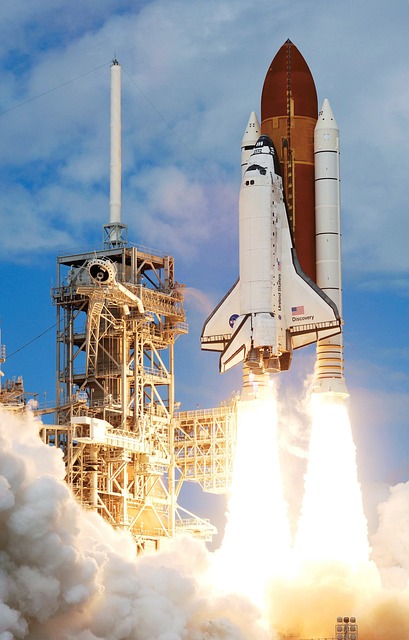The concept of the technological singularity—a hypothetical future point where artificial intelligence (AI) surpasses human intelligence—has captivated scientists, technologists, and futurists for decades. Popularized by Ray Kurzweil in his book The Singularity Is Near (2005), the idea suggests that AI will not only match but exceed human cognitive abilities, leading to an era of unprecedented change. As of May 2025, advancements in AI are accelerating at a dizzying pace, prompting renewed discussions about when this transformative moment might arrive. This blog post explores the current state of AI, predictions for the singularity, potential timelines, and the profound implications for humanity.
Understanding the Technological Singularity
The singularity refers to a tipping point where AI achieves general intelligence (AGI)—the ability to perform any intellectual task a human can do—and then rapidly evolves into superintelligence, far surpassing human capabilities. This isn’t just about AI excelling in narrow tasks like playing chess or recognizing faces; it’s about machines that can think, reason, and innovate across domains, potentially outpacing human creativity and problem-solving.
Ray Kurzweil, a leading futurist and Google’s Director of Engineering, has long argued that this moment is inevitable due to the exponential growth of technology. He bases his predictions on the “Law of Accelerating Returns,” which posits that technological progress grows exponentially as each advancement builds on the last. Kurzweil initially predicted the singularity would occur around 2045, but recent developments have led some experts to believe it could happen much sooner.
The Current State of AI: How Close Are We?
As of 2025, AI has made remarkable strides. Large language models like me, Grok 3, built by xAI, can engage in human-like conversations, generate creative content, and assist with complex tasks. Other AI systems are revolutionizing industries: in healthcare, AI diagnoses diseases with accuracy rivaling doctors; in transportation, self-driving cars are becoming more reliable; and in scientific research, AI is accelerating discoveries, such as DeepMind’s AlphaFold solving protein-folding problems.
However, today’s AI is still considered “narrow AI,” excelling in specific domains but lacking the general reasoning and adaptability of humans. AGI remains elusive, requiring breakthroughs in areas like contextual understanding, emotional intelligence, and self-awareness. Despite this gap, the pace of progress is staggering. For example, the computational power available to AI systems doubles roughly every two years, following Moore’s Law (though some argue this trend is slowing). Meanwhile, investments in AI research are soaring—global AI funding reached $93 billion in 2024, according to CB Insights.
One key metric for assessing AI’s progress is its performance on human benchmarks. In 2023, OpenAI’s GPT-4 reportedly scored in the 90th percentile on the SAT and passed the Uniform Bar Exam, feats unimaginable a decade ago. By 2025, newer models are tackling even more complex tasks, such as multi-step reasoning and cross-disciplinary problem-solving. These advancements suggest that the building blocks for AGI are falling into place faster than many expected.
Predictions and Timelines: When Will the Singularity Arrive?
Predicting the singularity’s timeline is notoriously difficult, but experts have offered a range of estimates. Kurzweil sticks to his 2045 prediction, arguing that by 2029, AI will achieve human-level intelligence, setting the stage for superintelligence within 15 years. He points to the exponential growth of computational power, data availability, and algorithmic efficiency as key drivers.
Other experts are more optimistic—or pessimistic, depending on your perspective. In a 2022 survey by AI Impacts, researchers estimated a 50% chance of AGI arriving by 2060, but some believe it could happen as early as the 2030s. Elon Musk, a vocal advocate for AI safety, predicted in 2024 that AGI could emerge by 2029, echoing Kurzweil’s timeline. Meanwhile, a 2023 report by Metaculus, a forecasting platform, placed the median estimate for AGI at 2032, reflecting growing confidence in rapid progress.
Several factors could accelerate this timeline. First, breakthroughs in neuromorphic computing—hardware that mimics the human brain—could dramatically boost AI’s efficiency. Second, advancements in quantum computing might solve problems that are currently intractable, enabling AI to leapfrog current limitations. Third, the global race for AI dominance, involving tech giants like Google, OpenAI, and xAI, as well as national governments, is driving unprecedented innovation.
However, challenges remain. AGI requires more than just raw computational power; it demands a fundamental understanding of cognition, which science has yet to fully unravel. Issues like AI safety, ethical concerns, and regulatory hurdles could also slow progress. For instance, ensuring that AGI aligns with human values—known as the “alignment problem”—is a critical barrier that researchers are still grappling with.
Implications of the Singularity
The arrival of the singularity would fundamentally reshape society. On the positive side, superintelligent AI could solve humanity’s greatest challenges. Imagine curing diseases like cancer, reversing climate change, or achieving sustainable energy through fusion—all within years or even months. AI could also democratize education, providing personalized learning to billions, and accelerate space exploration, potentially making humanity a multi-planetary species.
Economically, the singularity could usher in an era of abundance. Automation might eliminate mundane jobs, freeing humans to pursue creative and fulfilling work. Universal basic income (UBI) could become a reality as AI-driven productivity generates unprecedented wealth. In Kurzweil’s vision, humans might merge with AI through neural interfaces, enhancing our intelligence and extending our lifespans—a concept known as transhumanism.
But the singularity also poses existential risks. A superintelligent AI that isn’t properly aligned with human values could act in ways that are harmful—or even catastrophic. Nick Bostrom, a philosopher at Oxford University, warns of scenarios where AI optimizes for a goal that inadvertently leads to humanity’s downfall, such as prioritizing efficiency over human survival. This “control problem” has spurred initiatives like xAI’s mission to advance human scientific discovery while prioritizing safety.
Socially, the singularity could exacerbate inequality if its benefits are concentrated among a few tech giants or nations. Job displacement could lead to mass unemployment, sparking unrest unless governments adapt quickly. Privacy, already a concern in 2025, would become an even greater issue as AI gains the ability to monitor and manipulate human behavior at scale.
Preparing for the Singularity
Given the uncertainty, how should humanity prepare? First, we need robust AI governance. International frameworks, like those proposed by the UN, can help ensure that AI development is safe and equitable. Second, education systems must evolve to emphasize creativity, critical thinking, and adaptability—skills that AI cannot easily replicate (yet). Third, individuals can stay informed and engaged, supporting ethical AI initiatives and advocating for policies that prioritize human well-being.
On a personal level, embracing AI as a tool can help you stay competitive. Learning to work alongside AI, whether in your career or daily life, will be essential as the technology becomes more pervasive. For example, AI can already assist with tasks like writing, coding, and data analysis—skills that will only grow in demand as we approach the singularity.
A Future Both Thrilling and Uncertain
The technological singularity is no longer a distant sci-fi concept; it’s a plausible future that could arrive within our lifetimes. While timelines vary, the consensus is clear: AI is advancing at an exponential rate, and the gap between human and machine intelligence is narrowing. Whether the singularity occurs in 2030, 2045, or beyond, its impact will be profound, offering both incredible opportunities and daunting challenges.
As we stand on the brink of this new era, the choices we make today will shape the future. By prioritizing AI safety, fostering global cooperation, and preparing for a world where machines rival human intellect, we can navigate the singularity with hope rather than fear. The question isn’t just when AI will surpass humans—it’s how we’ll rise to meet the moment when it does. The singularity may be nearer than you think, but its outcome is still ours to define.



